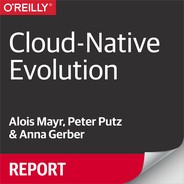Book Description
To remain competitive in today’s digital world, large businesses need to move fast. That’s why so many companies plan to shift from monolithic onsite architectures to applications designed solely to operate on cloud computing platforms. But the question remains: exactly how do companies successfully migrate toward cloud-native technologies and practices?
According to the Cloud Platform Survey conducted by O’Reilly Media and Dynatrace in 2016, 92% of respondents anticipate that their organizations will go cloud-native within the next 5 years. Based on their experience, Dynatrace identifies three stages that businesses move through on their journey to the cloud. This report details each stage of the strategy, and includes case studies that show you how to tackle problems that are both technical and cultural. You’ll also get a summary of responses to the survey.
The cloud migration strategy includes:
- Stage one: migrate existing applications to virtualized infrastructure with a lift-and-shift approach and implement an automated continuous integration/continuous delivery pipeline
- Stage two: move your monolithic application toward microservice architectures, with services running in containers on a PaaS service
- Stage three: Shift toward dynamic, rapidly scaling microservices and deploy services across the cloud platform’s software-defined architecture
Anna Gerber is a core member of NodeBotsAU. She is also a Technical Project Manager with the ITEE eResearch Group at the University of Queensland, Australia. She can be found on Twitter @annagerber.
Peter Putz is the Operations Lead of the Dynatrace Innovation Lab. He and his team spearhead technology research and business development efforts for next generation Digital Performance Monitoring solutions.
